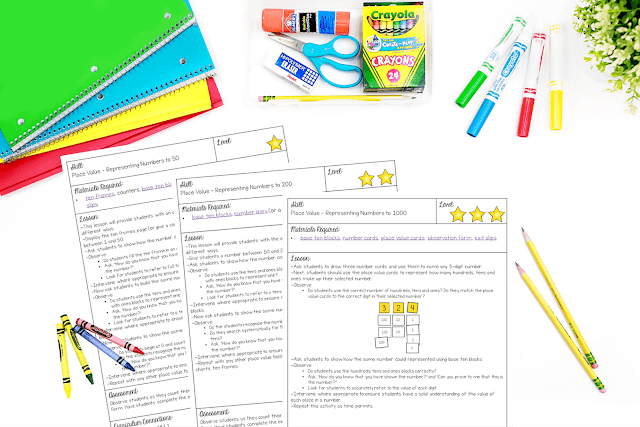Small-group instruction is a valuable teaching strategy, but the thought of getting started can be overwhelming. How exactly do you get small-group instruction organized? I've got the tips and tricks you need!
Why small-group instruction?
If you've spent any time in a classroom, you know that there is no one-size-fits-all lesson that meets the needs of every student. In my 24+ years of teaching, I've seen firsthand the benefits of teaching small-group lessons. A quick Google search asking what the research says about small-group instruction will give you plenty of scientific evidence to support my claim.
We know why small-group instruction is a good idea, but how do we actually do it?
How to establish your small groups
There is no "right way" to create groups for small-group learning. Groups might be based on academic ability, performance on a diagnostic task, or could be completely random.
In the context of math, I create my small groups based on a combination of those first two: my students' abilities as I've observed them and their performance or engagement with a diagnostic math task.
For me, having homogeneous groups where students have similar strengths and weaknesses allows me to structure lessons in a way that moves all students forward.
I aim for groups of no more than five or six students, and my student groups remain fluid. They may change from unit to unit, and I may even shift a student from one group to another while we're in the middle of a unit if their needs better match those of another group.
How to manage small-group rotations
I train my students for small-group rotations in math the same way I prepare for Daily 5 rotations. Training.
At the beginning of the year, I explicitly teach students what small-group activities should look like and what they should sound like. It is also a great time to brainstorm and discuss what to do when they have problems.
I want my students to know exactly what I expect from them.
Once they know, we spend a little time getting silly. One at a time, I have students act out what small-group time should look like and what it should not look like. Get them to demonstrate for the class the wrong way to do centers and let everyone have a giggle, then get them to show the correct way to do centers and praise, praise, praise! This is a great time to enlist the help of the students you suspect might struggle with expectations the most.
After this, we spend as much time as needed building stamina for centers. At this point, I don't pull groups for teaching. I observe, redirect, and encourage, and we celebrate each progress until the class manages independently.
What to teach in small group lessons
Once your centers run smoothly, you can begin pulling groups for focused instruction. Your lessons and activities should differ from one group to the next because you are targeting the specific strengths and needs of that group of students.
In my experience, this is where small-group instruction falls apart for a lot of teachers. Either they don't have the resources for a variety of lessons each day, or they don't have the time to prepare the lessons.
I advise you to find a high-quality, differentiated resource that will allow you to meet the needs of all the students in your class.
I prepared a set of full-year differentiated lessons for my students that is available to you here:
What the other kids are doing
Having engaging centers for students to use independently is an important consideration. If they're bored, they'll be off-task before you know it! I created my own centers to meet my goals for my students - hands-on, open-ended so they could be revisited, again and again, a variety to allow for student choice, and most importantly, fun! For me, worksheets don't fit the bill!
If you'd like to try out the centers I created for free, you can grab a Guided Math Quick-Start Guide right here:
Once you've established your expectations and routines for small-group instruction and gathered your materials, you'll be ready to watch your students take off! Get ready for engagement and progress in your classroom!
And don't worry about printing your new resources! Grab a free month of printing on me right here!!
If you've enjoyed this post, please share it with friends and colleagues on Facebook or pin it on Pinterest:



.jpg)

.png)


.png)
.png)
















.png)



No comments
Connect with me!! I love reading your comments and will respond as soon as I can!
Note: Only a member of this blog may post a comment.